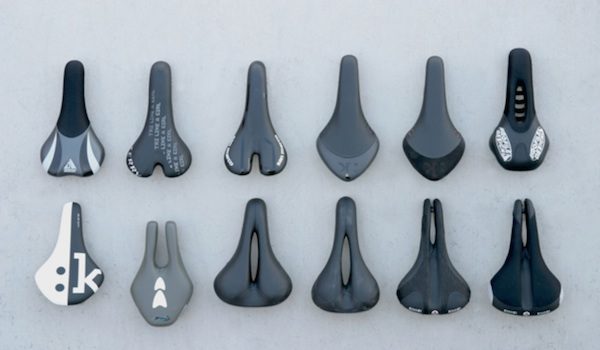None of us like to talk about them, but unless you’re some sort of unicorn of the cycling world, then you’ve experienced saddle sores in one form or another. As an unfortunate side effect of those long rides, here’s what you need to know to get healed up and back in the saddle in no time.

What are saddle sores?
First things first, just what are saddle sores? They can vary from person to person, and are a side of cycling not many of us are too keen to talk about, but when it comes to that pain in the butt, there are actually two different types.
- Being “saddle sore” refers to deep muscle bruising that makes you wary to sit down for days post-ride. This is most often experienced by beginner cyclists, or at the beginning of the season. Unfortunately, the only cure is to get back out there and get your bottom used to it. However, if after your first couple weeks of riding it’s not getting any better, your saddle may not be the right fit for you.
- Having “saddle sores” is another experience entirely. They can show up as little red bumps (almost like a pimple or ingrown hair), a cyst, or even abrasion on the skin.
What causes saddle sores?
Saddle sores are caused by a combination of factors including heat, pressure, and friction. Although many look at the tiny saddle on a road bike and think it looks like a torture device, a seat that is too wide is more often the problem.

The saddle comes into contact with your body at three main points: your two ‘sit bones’ (ischial tuberosities) and the soft tissue between your legs. Although you may experience that deep tissue bruising we mentioned earlier in your sit bones, it is the soft tissue that causes the most problems when it comes to saddle sores.
The number one cause of saddle sores is chafing. Combine constant friction with heat and sweat, and your skin is likely to become painful. Another issue can be the inflammation or infection at the base of a hair follicle (like an ingrown hair) that is caused by the constant pressure. Finally, skin ulcerations or boils can form and left raw and open to bacteria, these can quickly become infected.
How can you avoid saddle sores?
Although saddle sores may be an unavoidable part of the sport for many, there are things you can do to prevent them and ensure you heal up quickly.

- Break your butt in – You’ve heard the saying “slow and steady wins the race” right? Well, when it come to cycling, breaking into long distances gradually, whether as a beginner or at the start of the season, can make all the difference.
- The right chamois/saddle combination – You may have to do some trial by fire here, but finding the right combination of cycling short and saddle that fits your bottom just right can minimize friction and reduce the risk of developing saddle sores. If you think your saddle isn’t the right fit for you, go to your local bike shop and see if you can try a few out before committing to buying a new one.
- Skip the underwear – This may seem kind of intimidating at first, but wearing underwear beneath your chamois is a recipe for disaster. Skipping the undergarments eliminates potential hot spots and lets the chamois work to its fullest potential.
- Keep it clean – This should be a no brainer, but you should wear clean chamois shorts every ride. You don’t want to be adding dried sweat and chamois cream to the equation, as it will just speed up the chaffing process. Be sure to shower before and after riding when possible, and give any irritated skin ample time to breath.
- Chamois cream – Chamois cream can help reduce the friction between your skin and cycling shorts, but using too much can also cause issues, so you will have to find the right amount that works for you.
- Get a bike fit – Making sure your overall positioning on your bike and on your saddle is your first line of defence against saddle sores. If you’ve ever borrowed someone’s bike, you’ll know exactly what I mean. We are all shaped differently, and what works for one person won’t for the next. Lowering your seat to eliminate any side-to-side rocking can also help reduce friction.

How can you treat saddle sores?
As mentioned previously, for the deep tissue ‘saddle sore’ pain there is really nothing you can do. Fortunately, this pain goes away with practice, and an hour ride that leaves you tender at the beginning of the season won’t a couple weeks in.
For saddle sores themselves, rest may be in order to give your bottom time to heal up. Riding on raw and irritated skin will only increase pain and the chance of infection. Here are some things you can do in the meantime to speed up the process:
- Keep the area clean – Frequent showers or even a quick wipe with a damp towel will help keep bacteria out of the area, and will speed up the healing process.
- Let it breath – Think breathable underwear. Make sure the area isn’t trapping in heat and sweat, as this will continue to irritate the skin. Wear loose fitting pants or a skirt to minimize further chafing.
- Ointment or cream – Some cyclists recommend the use of an over-the-counter acne cream like Noxzema to both prevent infection and act as pain relief. Tee tree oil also offers antiseptic properties while actively cooling and soothing the area.
- Antibiotics – Antibiotics should only be used in extreme cases and at the advice of your doctor.
When to see a doctor
Most cases of saddle sores are uncomfortable, but aren’t cause for concern. However, if the sores are not going away within 2-3 weeks, are extremely painful, or get infectected, then it is time to see a doctor.
Although saddle sores are a pain in the ass, hopefully with these tips they won’t keep you off your bike for long! For more information, check out “Finding the best road bike saddle for you” and “Hygiene for cyclists – Why it’s important.”